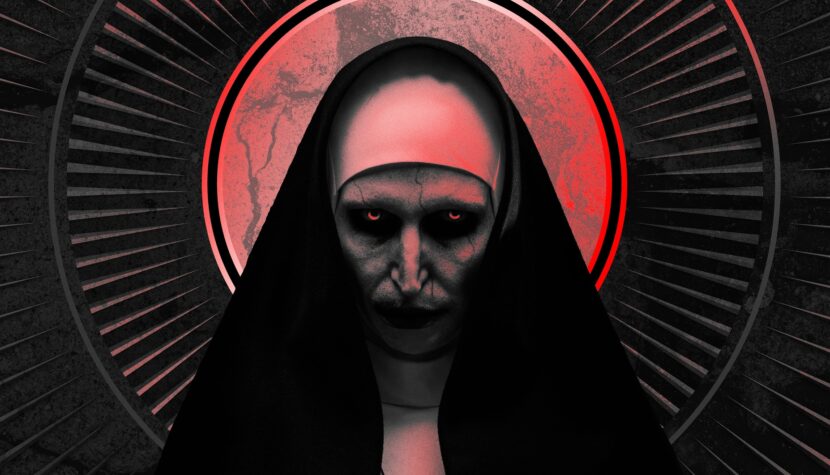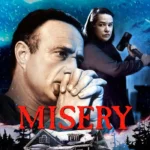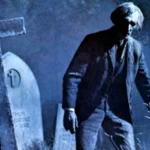THE NUN 2. Demon in a Woman’s Disguise [REVIEW]

Recently, we’ve heard a lot about this production, which is a spin-off of the well-known and appreciated series “The Conjuring.” We can now actually talk about “The Conjuring” universe, which further boosts the potential of “The Nun,” especially its second part. It was a highly anticipated story, and the profits from its theatrical premiere were expected to be high. In the first weekend, the film earned over $32 million in the USA alone. At this moment, it has surpassed $260 million compared to production costs of just under $40 million. That means success. So, is “The Nun 2” a successful production? Is it just a horror, or does it cleverly assess the situation of women in today’s Western society, especially from the perspective of the 1950s? We are now in the Halloween season. It’s worth getting a little scared, but also to think that behind these demons, hidden in dark corridors, there are always specific actions of specific people. And it is these actions that demons feed on, whether they come from actually hellish dimensions or are metaphors for evil that make sense only in our minds. “The Nun 2” can now be watched on HBO Max.
Before discussing its artistic value, let’s talk about the tool that enables its experience. “The Nun 2” on HBO Max is a production made in Dolby Vision 4K, which has certain consequences. Generally, it is a dark film. Light in scenes appears pointwise, which is very demanding for the display and aims to create a horror atmosphere, effectively. I assume that if someone didn’t go to the cinema to watch the film, they would want to see it using a television. A laptop or phone is a completely wrong choice because you won’t experience any of the effects planned by the creators or experience them in full. The problem with the tool is that such dark, high-contrast, and halftone productions are suitable for display on high-quality screens with the ability to illuminate and darken certain LED zones on the matrix. Then you get both deep black and very saturated and contrasting lights, such as a flashlight, candles, stained glass, etc. You also see what is in the shadows. It’s best if there are hundreds of these zones because a low-quality TV won’t handle the tonal range in Dolby Vision that “The Nun 2” contains, and the viewer will feel tired of staring and analyzing what’s on the screen, and automatically discouraged. As you can see, the specific type of technical capabilities of the device on which the film will be watched plays an increasingly important role in creating an impression for the viewer, and then evaluating it, in today’s times. Here, I nod to the critics who sometimes don’t even realize how the conditions of the screening subconsciously shape elements of the opinion about the evaluated work, not only in films.

“The Nun 1” was not a very complicated story of the struggle of two heroes with a demon, which allegedly took the most suggestive and faith-ruining form for believers – a nun. It was a correctly shot but not very scary film. You can watch it without feeling like you wasted your time, but you probably won’t revisit it. “The Nun 2,” visually, stands much higher. Special effects and editing are undoubtedly the title’s strengths. The acting is also good, although not at the level of “The Conjuring.” The problem lies with the scripted story. The demons are predictable and foolish. They act stereotypically, without any plot twists that could surprise the viewer in the end. They love to hide in dark corners, show their teeth, and have a strange preference for lifting people high by the throat. In general, they are exceptionally lenient, warning before attacking. Therefore, “The Nun 2” essentially has no victims in its plot. Most characters (excluding the prologue) manage to escape, even those in the background. In the context of the suggested power of the demon by church hierarchs, it’s quite amusing. These suggestions are made while one of the bishops greedily indulges in fatty meat, so what can you expect? Perhaps it’s hidden satire, but not so explicitly presented to influence viewers reflectively and, at the same time, not clash with the presentation of the demon. This is the film’s biggest flaw, consistently and effectively building an aesthetic atmosphere but destroying it with content that is too delicate and restrained, which is incomprehensible, considering, for example, the proposed age category.
Related:
The film’s advantage is the surprisingly large amount of time dedicated to character development and experiences, especially the nun Irene (Taissa Farmiga). It is not dedicated at all to the demon, turning it into a template from the horror stock – technically defensive but empty in terms of content. However, Irene compensates for this lack with her story and emotional adventures, which the creators used to create a very accurate sketch of the situation of women in the Catholic Church. It serves as an analogy to the situation of women in society, not only in the West but also in highly standardized states, including the Vatican, as seen in the story of the “bishop and the crazy nun” from the first part of the production. I emphasize that the film is not a critical treatise on the church. However, it contains suggestions, such as the presentation of the overeating cardinal, the nun’s fight with the generator, or Debra’s entrance into the convent, indicating that the formal structure of the church is unsuitable for our times, and the role of women in it is purely servile with few exceptions. But these sexuality-deprived “ladies” serve only as tools of repression and maintaining the slave-like role of nuns in the structure. Whether in the church or in the state, the goal is for men’s interests to be satisfied.

So, is “The Nun 2” a horror film, or rather an action movie with elements of morality and a pinch of horror with a moralistic undertone? I would stay within the first category, with the reservation that if someone expects a slasher, gore style, or the presentation of a truly scary and controversial demon, then they have chosen the wrong film. The film, directed by Michael Chaves, is a safe horror, of which there are many, but it stands out aesthetically. That alone makes it worth watching. Surely, it is not a horror film that will cause terrifying dreams or even a slight shiver down the spine. Everything stays within the limits of an acceptable and uncontroversial norm, even if the diagnosis of the situation of women in the church is accurate, and it’s good that horror films from “The Conjuring” universe condemn this state. After all, a demon in the guise of a woman had a much more sinister and practical meaning than something truly supernatural. Demonism is still associated with femininity in horrors. This tradition is a legacy from very dark times when the value of women was decided by those depicted in “The Nun 2” as bloated, ugly men who love to indulge in fatty meat, drive expensive cars, and serve obediently like slaves.





